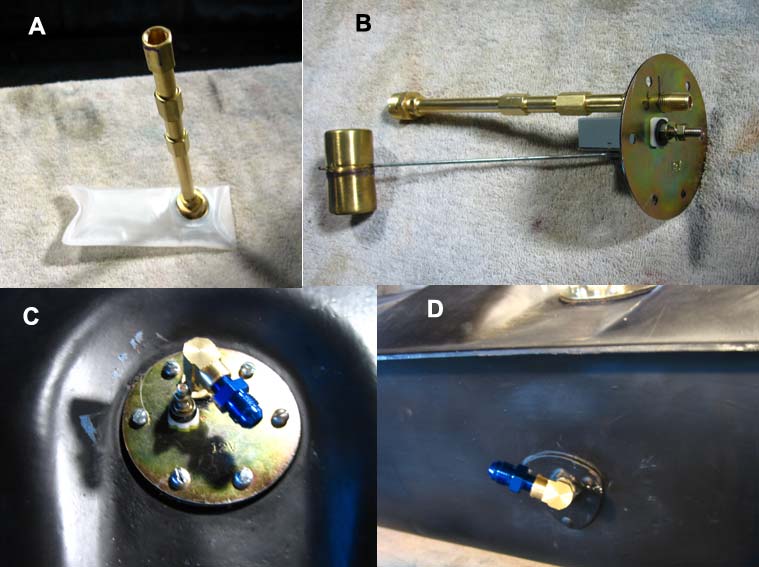JANUARY - MARCH 2009
I have recovered from by tick-borne infection, and I am back to work on the truck. After I painted the bed last fall, I just set it on the frame, which is where it sat all winter. The first chore was to securely bolt it to the frame. First I installed the rubber pads between the bed and the frame. Then I bolted it down using a combination of original, reproduction, and Home Depot bolts. Then I installed the rear fenders with the bolts only finger tight. Next was to finish all the stuff that would be under the bed floor. I put the exhaust system together using Purple Horny glass packs. It is nice and loud! For the last straight section of exhaust pipe, I used some steel pipe I had lying around. After I get the tailgate and bumper on, I will be able to figure out how long to cut the stainless steel pipes.
I purchased a set of stainless steel tail lights from Wescott's. They are a two-bulb system (brake and tail light), and I needed a three bulb system (brake, tail light, and turn signal). I went to NAPPA and purchased a pair of sockets that held two filament bulbs and dismantled them. I enlarged the hole in the back of the housings to fit the oval protrusion on the two-filament innards. The oval shape keeps the contacts oriented to the bulb and keeps everything from moving around. I had to "adjust" the bulb housing because the pin locations are different for one and two filament bulbs. I routed the wires through a stainless steel conduit that I picked up for $5 at a car show. The assembly ends in a plug (removed from my Toyota pickup before it went to the junkyard) so that the tail light assembly can be unplugged and removed if needed. I drilled some holes in the stake pockets and attached the tail lights with a stainless steel bracket. I added a license plate holder to the left side.
Next came the gas tank. I picked up a 12 volt sending unit, some 1/8 inch brass pipe and fittings from Home Depot, an intake fuel strainer from NAPA, the correct reproduction screws from Roy Nacewicz Enterprises, and some AN fittings from JEGS. My initial idea was to drill two holes in the top of the sending unit, one to accommodate the fuel pick-up tube and one to accommodate the fuel return line. I am using a fuel injection system that incorporates two fuel lines, one for supply and one for return. The hole in the gas tank is only 1-3/4 inches in diameter, and all of this stuff would not fit. I toyed with the ides of drilling a hole for the return line in front of the sending unit, but there is a baffle in the way. Finally, I settled on the idea of using the the original fuel line hole at the bottom of the tank for the return line (D in the picture below).
I assembled the pick-up tube from 1/8-inch brass tubing and fittings and installed the fuel strainer at the bottom (A in the picture below). I drilled a hole in the top of the sending unit and inserted the pick-up tube (B in the picture below). I installed it in the tank, but the pick-up tube offset the top of the sending unit and the screw holes did not line up. I enlarged the screw holes in the top of the sending unit (but not the cork gasket) and that worked (C in the picture below). Next time I do this, I will cut a second hole in the tank for the fuel pick-up and return tubes BEFORE I have the tank cleaned out and coated.


